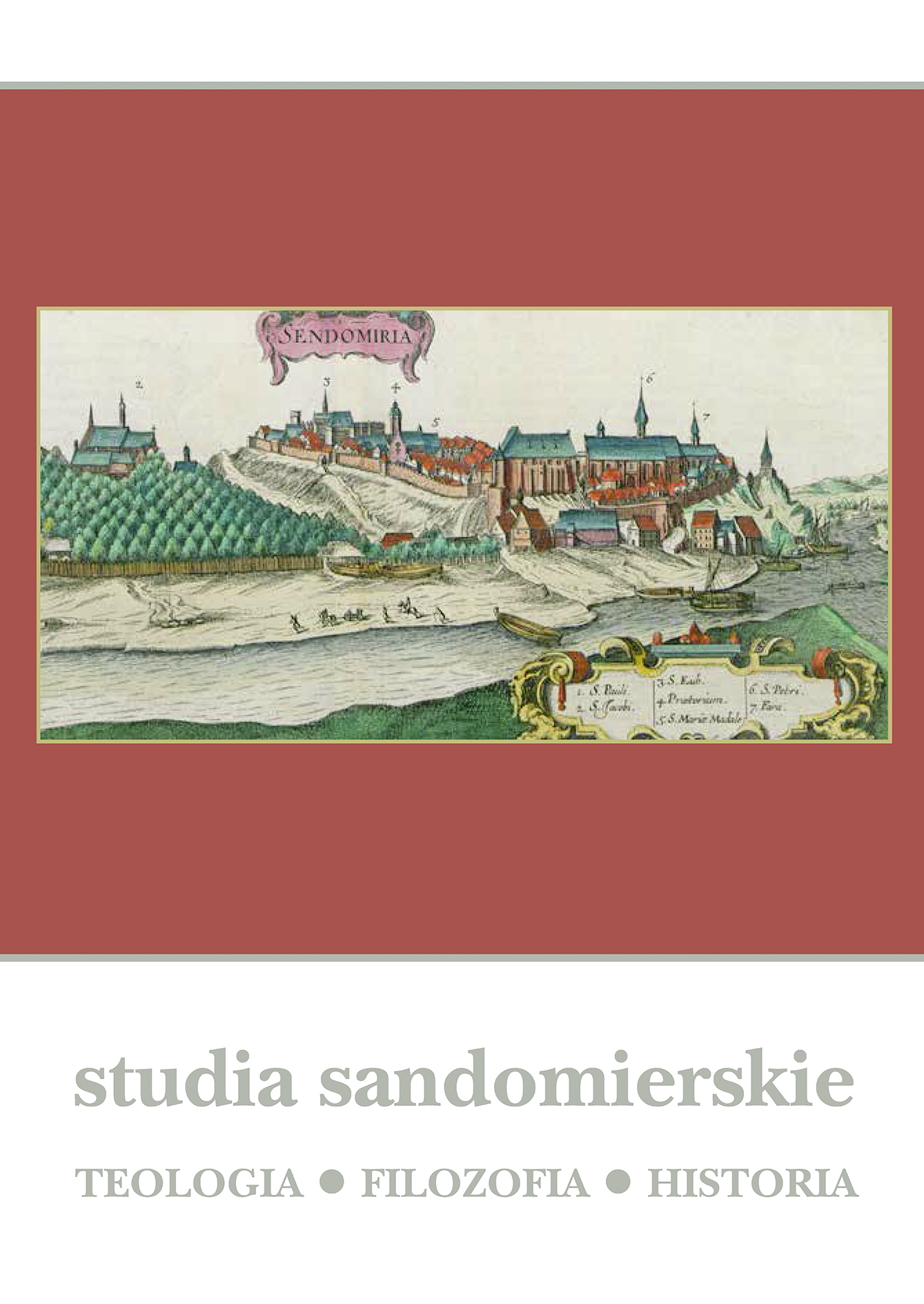Balak and Balaam – Traitors to the Gods
DOI:
https://doi.org/10.15633/sts.3009Keywords:
Balak, Balaam, Baal-Peor, Book of Numbers, Numbers 22–24Abstract
The purpose of the study is to analyze the conduct and motivations of two biblical figures, King Balak and the soothsayer Balaam, in relation to the deities they worshipped. The study shows that their conduct has a common trait: both of these characters abandoned their god and turned against him. Therefore, Balak and Balaam can and should be described as traitors to their gods. The two betrayals had different character and causes. Balak turned away from his god, turning to the God YHWH. His actions were guided by his disbelief that the god of Moab could provide a defense against the Israelites. Therefore, he did not engage the prophet of his god to obtain the curse of the Israelites from him, but abandoned him and turned to the prophet of YHWH, the God of Israel, for this purpose. Balaam, on the other hand, turned away from his God, going against His will to help the enemies of His people. The motivation for his conduct was payment for his assistance in acting against Israel. Since Balaam did not receive it because he could not get YHWH to Curse the Israelites, he decided to obtain it by giving the Moabites another way to deprive Israel of God's protection.
References
Źródła drukowane:
Biblia Hebraica Stuttgartensia, Hrsg. K. Elliger, W. Rudolph, 4. Ausg., Stuttgart 1997.
Septuaginta, Hrsg. A. Rahlfs, Stuttgart 1979.
Pismo Święte Starego i Nowego Testamentu w przekładzie z języków oryginalnych, wyd. 5, Poznań 2000.
Pismo Święte Starego i Nowego Testamentu. Nowy przekład, Waszawa 1975.
Pismo Święte Starego i Nowego Testamentu. Najnowszy przekład z języków oryginalnych z komentarzem, Częstochowa 2009.
Opracowania:
Ausloos H., On an Obedient Prophet and a Fickle God: The Narrative of Balaam in Num 22–24, „Old Testament Essays” 20 (2007), no. 1, s. 84–104.
Bosak P.C., Encyklopedia wszystkich postaci biblijnych, Kraków 2021.
Bosak P.C., Wszystkie miejsca biblijne. Słownik-konkordancja, Kraków 2017.
Dijkstra M., Is Balaam also among the Prophets?, „Journal of Biblical Literature” 114 (1995), s. 43–64.
Douglas M., Balaam’s Place in the Book of Numbers, „Man” 28 (1993), no. 3, s. 411–430.
Frankel D., The Deuteronomic Portrayal of Balaam, „Vetus Testamentum” 46 (1996), fasc. 1, s. 30–42.
al-Ghul O., The Question of the Homeland of Balaam Again: The Contribution of the Arabic Sources, „Die Welt des Orients” 36 (2006), s. 94–103.
Hepner G., The Mockery of Kings and Prophets: The Balaam Narrative Contains an Implied Critique of Moses, „Revue Biblique” 118 (2011), no. 2, s. 180–185.
Katolicki komentarz biblijny, red. R.E. Brown, J.A. Fitzmyer, R.E. Murphy, red. wyd. pol. W. Chrostowski, Prymasowska Seria Biblijna, Warszawa 2004.
Koehler L., Baumgartner, W., Stamm, J., Wielki słownik hebrajsko-polski i aramejsko-polski Starego Testamentu, t. 1–2, Prymasowska Seria Biblijna, Warszawa 2008.
Kuśmirek A., „Cóż ci uczyniłam, żeś mnie zbił już trzy razy?” (Lb 22,28). O tym jak oślica przemówiła do pogańskiego proroka, „Verbum Vitae” 32 (2017), s. 95–125.
Kuśmirek A., „Gwiazda Jakuba” (Lb 24,17) i jej interpretacje, „Verbum Vitae” 29 (2016), s. 41–65.
Kuśmirek A., Balaam i jego wyrocznie (Lb 22–24) w tradycji targumicznej, Warszawa 2011.
Layton S.C., Whence Comes Balaam? Num 22,5 Revisited, „Biblica” 73 (1992), no. 1, s. 32–61.
Lemański J., Balaam – pierwowzór proroka w Izraelu?, „Studia Paradyskie” 25 (2015), s. 53–81.
Lemański J., Księga Rodzaju, cz. 2, Rozdziały 11,27–36,43. Wstęp, przekład z oryginału, komentarz, Nowy Komentarz Biblijny 1/2, Częstochowa 2014.
Lutzky H., Ambivalence toward Balaam, „Vetus Testamentum” 49 (1999), no. 3, s. 421–425.
Łach S., Księga Liczb. Wstęp, przekład z oryginału, komentarz, ekskursy, Pismo Święte Starego Testamentu 2/2, Poznań–Warszawa 1970.
Łach S., Sens określenia proroctw Balaama wyrazem māšāl, w: S. Łach, Księga Liczb. Wstęp, przekład z oryginału, komentarz, ekskursy, Pismo Święte Starego Testamentu 2/2, Poznań–Warszawa 1970, s. 309–313.
Moore M.S., Another Look at Balaam, „Revue Biblique” 97 (1990), no. 3, s. 359–378.
Moyer C.J., Who Is the Prophet, and Who the Ass? Role-Reversing Interludes and the Unity of the Balaam Narrative (Numbers 22–24), „Journal for the Study of the Old Testament” 37 (2012), no. 2, s. 167–183.
Muraoka T., A Greek-English Lexicon of the Septuagint, Louvain–Paris–Walpole 2009.
Parchem M., Co właściwie wydarzyło się w Baal-Peor? Kilka uwag filologiczno--egzegetycznych na temat Lb 25,1–18, w: Pan moją mocą i pieśnią (Ps 118,14).
Prace dedykowane Księdzu Profesorowi Tadeuszowi Brzegowemu w 65. Rocznicę urodzin, red. S. Hałas, P. Włodyga, Studia 15, Kraków 2006, s. 181–194.
Rienecker F., Maier G., Leksykon biblijny, Prymasowska Seria Biblijna, Warszawa 2001.
Safren J.D., Balaam and Abraham, „Vetus Testamentum” 38 (1988), no. 1, s. 105–113.
Schorer-Finkelman N., Understanding Balaam’s Donkey: An Intertextual Approach, „The Jewish Bible Quarterly” 2 (1949), 94–102.
Słownik grecko-polski, red. Z. Abramowiczówna, t. 1–4, Warszawa 1958–1965.
Walton J.H., Matthews V.H., Chavalas M.W., Komentarz historyczno-kulturowy do Biblii Hebrajskiej, Prymasowska Seria Biblijna, Warszawa 2005.
Zernecke A.E., Balaam’s God(s): Divine Designations in Num 22–24, „Religions” 14 (2023,) no. 8, s. 967.
Downloads
Published
Issue
Section
License

This work is licensed under a Creative Commons Attribution 4.0 International License.
Authors who publish with this journal agree to the following terms:
- Authors retain the copyright and full publishing rights without restrictions, and grant the journal right of first publication with the work simultaneously licensed under a Creative Commons Attribution 4.0 International License that allows others to share the work with an acknowledgement of the work's authorship and initial publication in this journal.
- Authors are able to enter into separate, additional contractual arrangements for the non-exclusive distribution of the journal's published version of the work (e.g., post it to an institutional repository or publish it in a book), with an acknowledgement of its initial publication in this journal.
- Authors are permitted and encouraged to post their work online (e.g., in institutional repositories or on their website) prior to and during the submission process, as it can lead to productive exchanges, as well as earlier and greater citation of published work (See The Effect of Open Access).

